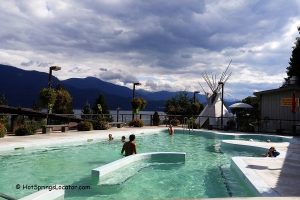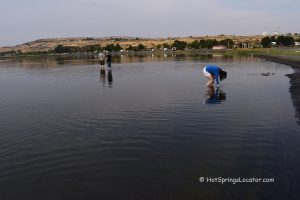
• Bath Roman Thermae is a well-preserved ancient bath complex in the City of Bath in England
• Thermae Bath Spa is the only place in the UK where you can enjoy the same water as 2,000 years ago
Bath Roman Thermae in the City of Bath in England's South West is one of the best preserved and world-famous Roman Thermae complexes. The site features numerous archaeological artifacts and a spectacular Roman Bathing house with thermal spas and pools.
You cannot physically bathe there. You can, however, immerse yourself in the ancient history of the Roman Empire. For those seeking the actual aquatic experience, we have great news too. There are three other places in the area where hot springs lovers can enjoy the same water as bathers from thousands of years ago. Time machine not required.
Hot Springs and Ancient Deities
People have been soaking in the local springs for over two thousand years. Before the Roman invasion of modern-day England, Celts had used hot springs for healing and worship.
They placed the shrine to honor of the goddess Sulis near the pool. Celts revered her as a nurturing and life-giving deity and feared her power to inflict curses upon those who angered or displeased her devotees. Romans brought their own thermae culture and continued the Sulis worship, romanizing her as Sulis Minerva.
The generally accepted theory is that the City of Bath as we know it was founded by the Romans. There is also an alternative version that attributes the creation of the city to the Celtic Britons.

Legend of Prince Bladud and His Pigs
Legend has it that the first person to discover and bathe in the hot springs was Prince Bladud. He was banished from his kingdom because of incurable leprosy, along with a herd of pigs he had infected.
While exploring the area, Prince Bladud stumbled upon a steaming patch of mineral-rich mud where a hot spring emerged. His pigs quickly jumped in and were amazingly cured of their leprosy.
Bladud decided to jump in and got healed too. He returned to the kingdom and later established the city on the miraculous springs. While the prince's story is entertaining, no hard historical evidence exists to confirm it.

The First Roman Baths and Temple
The Romans arrived in Britain in 43 AD. In 60 AD, they founded the temple complex of Aquae Sulis (Latin: the Waters of Sulis), devoted to the goddess Sulis Minerva, the worship of whom they encouraged.
Aquae Sulis was a religious settlement with baths and various buildings to house residents and pilgrims traveling to the temple.
The Decline of the Aquae Sulis
With Romans leaving Britain in 410 AD, the settlement declined. Many historical artifacts and recordings showed ensued chaos and violence in the area.
Later, an excavation of 1984-1985 found a severed skull of a young girl dated back to the age of decline, indicating the level of brutality at the time.

Find Places to Stay
From Post-Roman to Modern Times
A monastery appeared in the area around 675 AD. The related records mention a "hot lake" near it.
In the 9th century, King Alfred recreated the town with a separate abbey precinct. The city had been experiencing growth ever since, reaching 40,020 people in 1801. At that time, that was one of the largest cities in Great Britain by population.
Among the city's residents was the exiled emperor of Ethiopia, Haile Selassie, who lived here from 1936 to 1940.
During World War II, Bath was subject to heavy bombardment by Germany, with over 400 residents killed and more than 19,000 buildings destroyed or damaged.
Thermae Bath Spa - Video
Where to Soak in the City Today
Today, Bath is a thriving city you can easily visit for a day trip from London or Bristol.
Archeologists rediscovered Roman Baths in 1878, and while you cannot soak there, you can visit this unique historical place. You can, however, soak at the Thermae Bath Spa.
Every day about 250,000 liters of geothermal mineral water flow out of 3 main city hot springs. It comes from the ground at 45º C (113º F) and gets cooled to 34º C (93º F).
The spa has an outdoor pool, an indoor pool, a whirlpool, and a lazy river. You can also use the wellness center with two steam rooms, an infrared room, a relaxation room, and even an ice chamber!
This is the UK's only natural hot thermal spa on the roof, where you can soak with a breathtaking view of the historic Abbey and the beautiful Somerset hills around the city.
Enjoy the same healing water Celts and Romans enjoyed centuries ago!
You May Also Like








